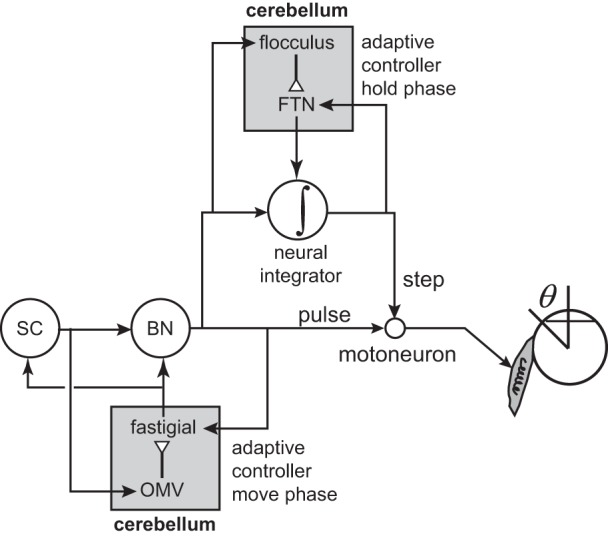Fig. 14.

Control of saccades via internal feedback. To generate a saccade, there is a burst of activity in a caudal region of the superior colliculus (SC) corresponding to the saccade vector (simultaneously, there is a pause in the fixation-related neurons in the rostral pole regions of the SC). This input drives the burst generators (BN), producing a pulse-like motor command that activates the motoneurons. This pulse is under control of the oculomotor vermis (OMV) region of the cerebellum. The output of OMV is to the fastigial nucleus, which in turn, acts on the burst generators. The output of the fastigial nucleus is also to the rostral pole region of the superior colliculus (May et al. 1990). With its projections to the rostral pole of SC, the cerebellum may serve to reactivate the fixation-related neurons, helping to end precisely the activity in the caudal colliculus. The pulse is transformed by the neural integrator into a step-like command that holds the eye still following completion of the saccade. The step is also under control of the cerebellum: the flocculus and the flocculus target neurons (FTN) in the vestibular nucleus. Arrows represent excitatory connections, and open triangles represent inhibitory connections.
